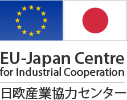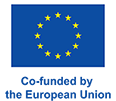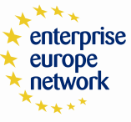
Weekly Japanese Industry and Policy News (May 12-May 18, 2023)

The EU-Japan Centre is pleased to start a new weekly service by publishing brief summary of the latest information from the Japanese governmental organizations & private companies/organizations. A couple of minutes reading to be informed about what is happening in Japan's policy, economy, EU-Japan relations, and innovation.
*Information is deemed correct at the time of release.
G7 Finance ministers and central bank governors meeting concludes
The G7 = finance ministers and central bank governors meeting of seven major countries held in Niigata City for three days ended on May 13 and adopted a joint statement stating that they stand ready to act as appropriate to maintain
The joint statement reaffirmed its unwavering support for Ukraine's aggression, said it would continue to impose economic sanctions on Russia, and would unite against any attempt to circumvent or undermine it.
There was also a discussion based on the lessons learned from the series of bank failures in the United States, and the risks of the digital age, such as the rapid outflow of deposits due to the spread of information via SNS. In addition, they plan to launch new partnerships including developing countries and emerging countries within the year, as it is necessary to urgently strengthen the supply chain of products that are important for clean energy.
Meanwhile, the statement said illicit activities related to fundraising have enabled North Korea to launch an unprecedented number of ballistic missiles. The G7 plans to improve the ability related institutions to identify money laundering and illicit money exchanges through crypto assets.
MOF website:
https://www.mof.go.jp/english/policy/international_policy/convention/g7/g7_20230513_1.pdf
NTT establishes new company for commercialization of NTT "IOWN", aiming to acquire global standard for 6G
NTT will establish a new company to commercialize the next-generation communication network called "IOWN", which is under development, aiming for sales of JP¥200 billion in 2030.
IOWN replaces electronic to all-optical transmission from semiconductors to networks. There is no energy loss when converting signals from light to electricity, power consumption is reduced to 1/100 compared to existing communication networks, and communication capacity is 125 times higher than mobile phone communication standards such as 4G.
The new company plans to consolidate the several hundred personnel engaged in development at NTT Group's research laboratories and manufacture communications equipment related to "IOWN." As the race to develop technologies such as generative artificial intelligence (AI), which consumes a large amount of power, is accelerating, it is essential to improve the power efficiency of information and communications networks. Commercialization requires collaboration with other industries, and we are working with semiconductor manufacturers such as Intel and Nvidia.
NTT website:
https://group.ntt/en/newsrelease/2023/05/12/230512g.html
IOWN website:
https://www.rd.ntt/e/iown/
Marubeni launches sales of low-carbon-emission methanol
Marubeni Corporation announced on May 10 that it has acquired marketing rights in Asia (excluding China) for low-carbon emission methanol "Circular Methanol." The methanol is manufactured by Anyang Shunli Environmental Technology Co., Ltd. (Shunli), which is owned by MFE Shanghai Environmental Engineering and Technology Co., Ltd. (MFES) in China. The product will be manufactured at the Shunli plant, which began commercial operation in September 2022, using Carbon Recycling International's technology to produce methanol from CO2 and hydrogen.
Unlike methanol produced from natural gas or coal, it is possible to produce methanol in which the amount of CO2 absorbed and used during the production process exceeds the amount emitted. The plant is the world's first commercial large-scale plant that synthesizes and manufactures methanol from only CO2 and hydrogen, with an annual production capacity of 110,000 tons.
This product corresponds to a CCU that utilizes CO2 recovered from exhaust gas and the atmosphere as a raw material for chemical products and fuel. Starting with this product, Marubeni will continue to promote sales of eco-friendly methanol for use in chemicals and fuels, and work to build a circular economy that will lead to a reduction in CO2 emissions.
Marubeni website:
https://www.marubeni.com/en/news/2023/release/00051.html
Kubota and NIES start joint research to build a waste resource recycling system
Kubota and the National Institute for Environmental Studies announced on May 10 that they have started joint research aimed at creating a mechanism for the effective use of waste and resource recycling that will play a role in the "regional circulation and ecological sphere. They will work on a survey of the current status of various types of waste treatment, a survey of resources contained in waste, and a recovery test of valuable metals and phosphorus from waste at a demonstration plant.
The period is from April 2023 to March 2026. The name of the joint research is "Construction of a multilayer resource recycling system centered on self-sustained melting separation technology (DEEP RECYCLE SYSTEM).
Kubota supplies melting furnaces, which are used to treat waste and sewage sludge, to local governments and waste disposal companies. The company's melting furnace has a high resource recovery efficiency, and it can stably recover a high concentration of phosphorus used in fertilizer from sewage sludge. In addition, it is possible to recycle electronic devices and automobiles that were previously difficult to recycle and were incinerated or landfilled. Valuable metals can also be recovered from waste such as residues.
In addition, stable operation (self-sustained melting operation) using only plastic residue, which is difficult to recycle, is also possible. In addition to being able to reuse plastic without waste, it can also be used to recover waste resources.
KUBOTA website (in Japanese):
https://www.kubota.co.jp/news/2023/management-20230510.html
Commercialization of e-fuel in the first half of the 2030s, Ministry of Economy, Trade and Industry ahead of schedule
The Ministry of Economy, Trade and Industry (METI) will bring forward the goal of commercializing a "e-fuel" made from carbon dioxide (CO2) and hydrogen to the early 2030s. Until now, 2040 was targeted, but it was announced that CO2 emissions from current vehicles would be halved by 2035 at the ministerial meeting of the seven major countries (G7), and the EU would approve the use of e- fuel. That‘s the reason why the target year would be changed. The METI presents new goals at the public-private council for e-fuel promotion.
When e-fuel is burned, it emits CO2, but if it reacts with hydrogen and offsets the CO2 absorbed during manufacturing, it is possible to reduce emissions to virtually zero, leading to a reduction in CO2 emissions from the vehicles currently owned. Therefore, the movement of utilization is spreading all over the world. The EU changed its policy from 2035 onwards to selling only cars that do not emit CO2. Reflecting the intentions of Germany and other countries, the sale of vehicles using an internal combustion engine (ICE) is permitted only for the use of e-fuel.
The problem is the high cost. According to the METI, the production cost of e- fuel is JP¥300 to 700 per liter, equivalent to two to five times the current gasoline price. After commercialization, the Ministry of Economy, Trade and
Industry plans to mass-produce 10,000 barrels (1,590,000 liters) per day, leading to price reductions.
METI website (YouTube in Japanese):
https://www.youtube.com/watch?v=UX-vwEaChgM
Ammonia co-firing will spread pollution, Finnish private research institute estimates
The Finnish energy and environmental think tank Center for Research on Energy and Clean Air (CREA) found and complied that co-firing with ammonia in coal-fired power plants would increase total emissions of PM2.5 (fine particulate matter) and its source materials. The report was announced on May 15. It pointed out that the higher the ratio of co-firing, the more it will increase, and "It will have a fatal impact on the atmospheric environment."
In Japan, JERA, which is equally owned by Tokyo Electric Power Company Holdings and Chubu Electric Power Co., Ltd., has started a demonstration test of ammonia co-firing at the coal-fired Hekinan Power Station (Aichi Prefecture). Ammonia does not emit carbon dioxide (CO2) when burned, and is expected to help reduce environmental impact. The plan is to increase the co-firing rate to 20% in FY2023 and to 50% or more in FY2028.
CREA calculated the total emission of pollutants using literature and data, keeping in mind the co-combustion of the Hekinan Power Plant. Contaminants increased by 67% when the co-firing ratio increased from 0% to 20%, and increased by 2.7 times when the co-firing ratio increased to 50%. The report said that increased emissions of pollutants will affect human health and accumulate in oceans and land, "adding to the environmental problem". Japan plans to improve its technical capabilities for ammonia co-firing in order to ensure a stable supply of energy. There is criticism overseas that it will lead to the preservation of coal-fired power.
CREA website:
https://energyandcleanair.org/publication/air-quality-implications-of-coal-ammonia-co-firing/
METI Introduces new regulations on Toys
On May 16, the Ministry of Economy, Trade and Industry (METI) announced that a cabinet decision was made to “Cabinet Order for Partial Revision of the Consumer Product Safety Law Enforcement Order''. This government ordinance newly designates entertainment goods made of magnets and toys made of water-absorbing synthetic resin as specified products under the Consumer Product Safety Law. As a result, the sale of so-called magnet sets that combine multiple magnets with strong magnetic force and water-absorbing toys that expand greatly by absorbing water will be prohibited.
Regarding entertainment products made of magnets (magnet sets), 11 accidents occurred that children accidentally ingested multiple magnets from 2017 to 2022, and the intestinal walls were pulled together by strong magnets, requiring laparotomy to remove them. Regarding water-absorbing synthetic resin toys (balls that swell with water), there were four accidents in 2021 in which infants swallowed these products by mistake, causing them to swell greatly in the intestines and requiring laparotomy to remove them. If an accident were to occur with these two products, the risk of an accident would be high and the damage would be serious. Therefore, it was decided to designate these two products as specific products to be subject to regulation, and to regulate the sale of products that do not conform to technical standards.
The METI instructs consumers that those who have already purchased a magnet set or a ball that inflates with water should not let infants touch the product, and that even if the two products are on sale, do not purchase them.
METI website (in Japanese):
https://www.meti.go.jp/press/2023/05/20230516002/20230516002.html
Hydrogen engine startup partners with Israeli company
Hydrogen engine development startup iLabo will accelerate the development of hydrogen engines in collaboration with domestic and foreign companies. By May 15, TPR, an engine parts manufacturer, and Aquarius Engines, an Israeli industrial engine manufacturer, had entered into capital and business alliance agreements, respectively. The funds raised from TPR will be used to expand the engine development facilities and jointly promote technological development. They work with Aquarius on joint development of hydrogen engines and generators.
iLabo is developing a "hydrogenation conversion" technology that converts truck diesel engines into hydrogen engines. It has an engine bench for development that is a modified truck engine at its base in Yamanashi Prefecture, and plans to commercialize this technology in 2024. Diesel engines of truck emit more than 1.5 times more carbon dioxide (CO2) than passenger cars, so decarbonization is required. The company's hydrogenation conversion has the advantage of reducing the total vehicle price and modification cost to about one-third of the fuel cell vehicle (FCV) truck price, and can decarbonize existing trucks.
Aquarius has developed a compact and lightweight free piston linear engine (FPLE) that does not have parts such as valves. FPLE is compatible with fuels such as gasoline, ethanol, liquefied petroleum gas (LPG), and biofuels such as methanol. They plans call for compatibility with ammonia and hydrogen by the end of 2024.
iLabo website (in Japanese):
https://h2ice.co.jp/news/tpr
Prime Minister Kishida holds talks with executives of seven major semiconductor companies of the United States, Taiwan, and South Korea
On May 18, Prime Minister Kishida met with executives from seven semiconductor-related companies of the United States, Europe, South Korea, and Taiwan at the prime minister's official residence. It is unusual for the executives of the world's major semiconductor companies to gather together.
They exchanged opinions on business development in Japan, and the Prime Minister himself called for investment in Japan. Seven people attended, including Mark Liu Chairman of TSMC, Pat Gelsinger CEO of Intel, Sanjay Melotra CEO of Micron, Kye Hyun Kyun CEO of Samsung Electronics,
Prabhu Raja President of Applied Materials, Dario Gill IBM Senior Vice President and Max Massu Mirgori Executive Vice President of IMEC.
From Japan side, in addition to the Prime Minister, Minister of Economy, Trade and Industry Nishimura and Deputy Chief Cabinet Secretary Kihara were present.
According to media reports, Micron has announced that it will invest up to
JP¥ 500 billion in Japan and introduce equipment to the Hiroshima factory to manufacture cutting-edge products. Samsung explained the opening of a research and development base, and TSMC mentioned expanding investment in Japan. Intel said it plans to strengthen cooperation with Japanese material manufacturers and semiconductor manufacturing equipment manufacturers.
The Japanese government has put together a "semiconductor and digital industry strategy" in 2021, and is set to catch up with a total budget of about
JP¥ 2 trillion. In addition to supporting domestic manufacturers, it is actively inviting foreign companies. Japan used to boast a 50% share of the global semiconductor industry, but now lags behind the United States, South Korea, and Taiwan. The rise of China is also notable. Japan and Europe are focusing on attracting leading semiconductor companies.
METI website (in Japanese):
https://www.meti.go.jp/press/2023/05/20230518001/20230518001.html








